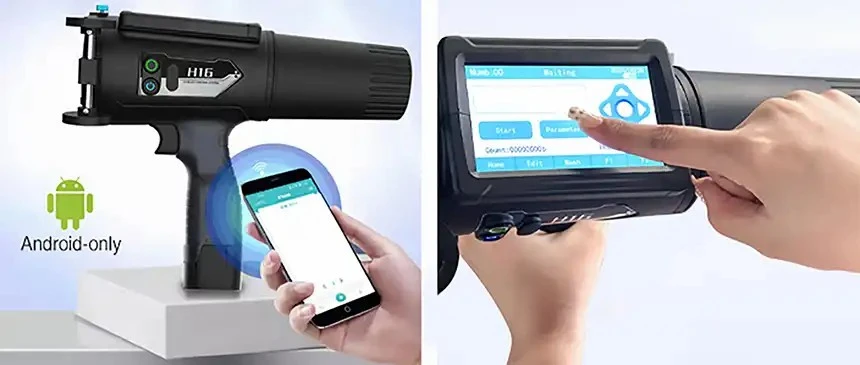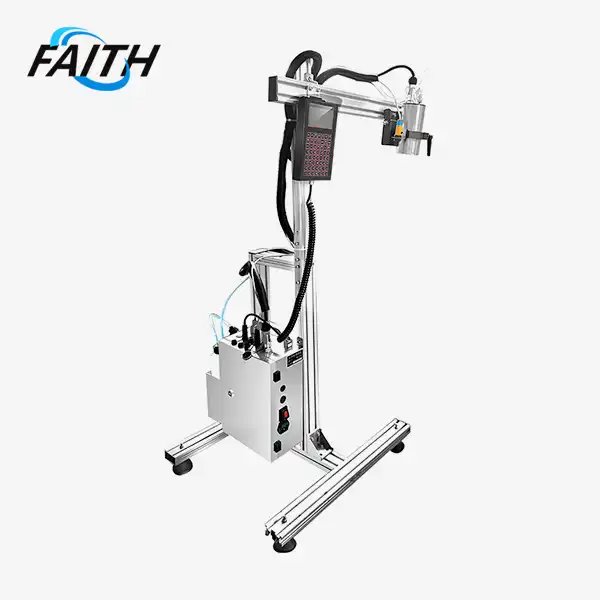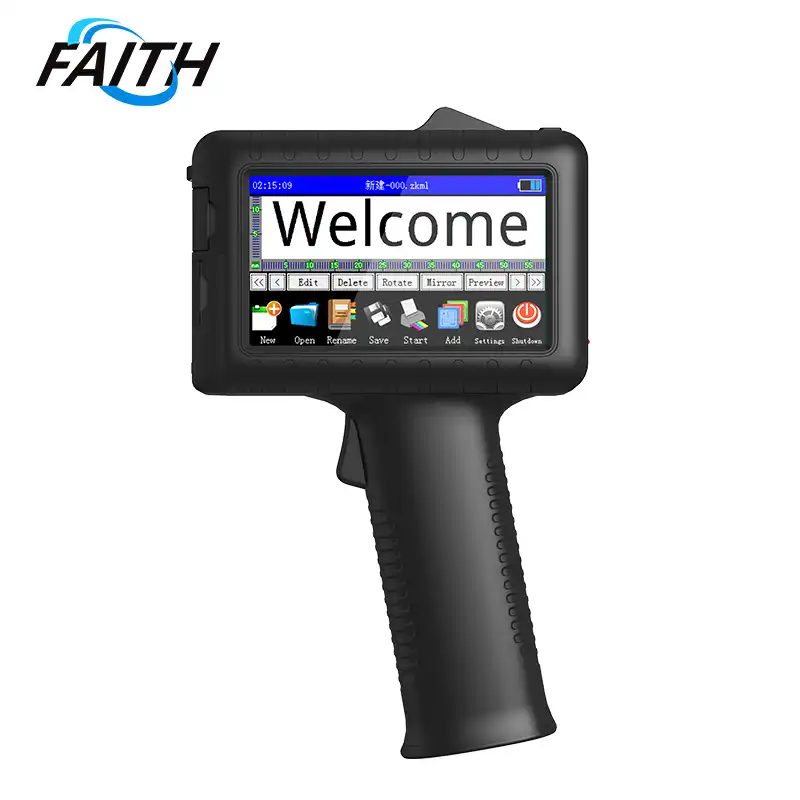How to Achieve Crisp Large Character Marking on Boxes?
Achieving crisp large character marking on boxes requires a combination of advanced technology, proper setup, and attention to detail. To ensure high-quality results, use a state-of-the-art large character printer designed for industrial applications. These printers offer adjustable font sizes, multiple printing lines, and versatile ink options. Key factors include selecting the right ink type for your box material, optimizing printer settings for clarity, and maintaining consistent print speed. Regular maintenance of the printer and proper surface preparation of the boxes also contribute significantly to achieving sharp, legible markings. By following these best practices, businesses can enhance their product identification and traceability processes with clear, durable large character markings.
Comprehending Large Character Marking Technology
Large character marking is an essential process in various industries, particularly in packaging and logistics. This technology allows for clear, visible labeling on boxes, crates, and other large containers, facilitating easy identification and tracking throughout the supply chain. Modern faith printers have revolutionized this process, offering unprecedented flexibility and efficiency.
The Evolution of Large Character Printers
The journey of large character marking has been marked by significant technological advancements. Early methods relied on stencils and manual application, which were time-consuming and prone to errors. Today's large character printers represent a quantum leap in capability and convenience. These sophisticated devices can print high-quality text, logos, and barcodes at impressive speeds – up to 60 meters per minute in some cases.
Key Features of Modern Large Character Printers
Contemporary large character printers boast an array of features that contribute to their versatility and effectiveness:
- Adjustable Font Sizes: The ability to adjust font sizes is crucial. Many printers offer a range of 10-126mm in height, with customizable width options. This flexibility allows for optimal visibility regardless of the box size or viewing distance.
- Multiple Printing Lines: Advanced printers can handle multiple lines of text simultaneously. For instance, some can print 4 lines of 7x5 dot matrix characters, 2 lines of 16x16 dot matrix characters, or a single line of 32x32 dot matrix characters.
- Diverse Printing Content: Beyond simple text, these printers can incorporate real-time date clocks, batch numbers, counting functions, and shift identifiers. They also offer features like font inversion and horizontal flipping for specialized applications.
- 360-Degree Printing Direction: This feature allows for marking in any orientation, providing unparalleled flexibility in box positioning and production line setup.
- Comprehensive Software Features: Modern printers come equipped with software that enables real-time date and time clocks, batch printing, counting functions, and more. These features enhance traceability and inventory management.
The Importance of Ink Selection
The choice of ink plays a pivotal role in achieving crisp large character marking. Different box materials require specific ink types:
- Water-based Inks: Ideal for permeable surfaces like cardboard or paper boxes. These inks offer quick drying times and good adhesion on absorbent materials.
- Oil-based Inks: Better suited for non-permeable surfaces such as plastic or coated cardboard. They provide excellent durability and resistance to smudging.
The availability of multiple ink colors – including black, red, blue, yellow, and white – allows for customization and enhanced visibility based on the box color and environmental conditions.
Optimizing Printer Settings for Crisp Markings
Achieving crisp large character marking on boxes isn't just about having the right equipment; it's equally about optimizing your printer settings. Let's delve into the key aspects of printer optimization that contribute to clear, sharp markings.
Fine-tuning Print Resolution
The resolution of your large character printer significantly impacts the crispness of the markings. Most modern printers offer adjustable dot matrix settings:
- 7x5 Dot Matrix: Suitable for basic text and numbers. It's efficient for high-speed printing but may lack detail for complex graphics.
- 16x16 Dot Matrix: Offers a good balance between speed and detail. Ideal for most standard applications.
- 32x32 Dot Matrix: Provides the highest level of detail, perfect for intricate logos or small text. However, it may reduce printing speed.

Experiment with these settings to find the optimal balance between print quality and production speed for your specific needs.
Adjusting Print Speed and Distance
The speed at which boxes move past the printer and the distance between the printhead and the box surface are crucial factors:
- Print Speed: While many printers can operate at speeds up to 60m/min, slower speeds often result in crisper markings. Find the sweet spot that balances production needs with print quality.
- Printhead Distance: Maintaining the correct distance between the printhead and the box surface is vital. Too close, and you risk smudging; too far, and the print may become fuzzy. Most printers have adjustable printheads to accommodate various box sizes and shapes.
Optimizing Ink Flow and Drying Time
Proper ink management is essential for crisp markings:
- Ink Flow Rate: Adjust the ink flow to match your print speed and surface material. Too much ink can lead to bleeding, while too little results in faint, incomplete characters.
- Drying Time: Consider the drying time of your chosen ink. Some environments may require additional drying measures, such as fans or heaters, especially for non-porous surfaces or high-humidity conditions.
Leveraging Advanced Software Features
Modern large character printers come with sophisticated software that can enhance print quality:
- Font Optimization: Use software features to adjust character spacing, boldness, and kerning for optimal readability.
- Auto-Adjustment: Some printers offer automatic adjustment features that optimize settings based on the detected box material and environmental conditions.
- Quality Control Integration: Implement software that monitors print quality in real-time, alerting operators to any degradation in marking crispness.
By fine-tuning these settings and leveraging advanced software features, you can significantly enhance the crispness and overall quality of your large character markings on boxes.
Maintenance and Best Practices for Consistent Quality
Maintaining consistent quality in large character marking requires more than just initial setup. Regular maintenance and adherence to best practices are crucial for ensuring crisp, clear markings over time. Let's explore the key aspects of printer maintenance and operational best practices.
Regular Printer Maintenance
Consistent maintenance is the cornerstone of reliable performance:
- Daily Cleaning: Implement a daily cleaning routine for printheads and nozzles. This prevents ink buildup and ensures consistent ink flow.
- Ink System Flushing: Regularly flush the ink system to prevent clogs and maintain optimal ink viscosity.
- Filter Replacement: Change ink filters according to the manufacturer's recommendations to ensure clean, uncontaminated ink flow.
- Printhead Alignment: Periodically check and adjust printhead alignment to maintain precise character formation.
Environmental Control
The environment in which your large character inkjet printer operates can significantly impact marking quality:
- Temperature Control: Maintain a consistent ambient temperature. Extreme temperatures can affect ink viscosity and drying time.
- Humidity Management: Control humidity levels to prevent issues with ink drying and adhesion, especially on certain box materials.
- Dust Reduction: Implement dust control measures to prevent particulate contamination of printheads and freshly printed markings.
Operator Training and Standard Operating Procedures
Well-trained operators and standardized procedures are essential for maintaining quality:
- Comprehensive Training: Ensure all operators are thoroughly trained on printer operation, maintenance, and troubleshooting.
- Standard Operating Procedures (SOPs): Develop and implement detailed SOPs for printer setup, operation, and maintenance.
- Quality Check Protocols: Establish regular quality check intervals and procedures to catch and address any issues promptly.
Box Preparation and Handling
Proper box preparation contributes significantly to marking quality:
- Surface Cleaning: Ensure box surfaces are clean and free from dust, oil, or moisture before printing.
- Consistent Positioning: Implement systems to ensure boxes are consistently positioned relative to the printhead for uniform marking placement.
- Material Compatibility: Regularly review and update ink selections based on box materials to ensure optimal adhesion and durability.
Continuous Improvement and Monitoring
Implement systems for ongoing quality enhancement:
- Performance Tracking: Use data logging features to track printer performance over time and identify trends or issues.
- Regular Audits: Conduct periodic audits of marking quality and printer performance.
- Feedback Loop: Establish a system for operators to report issues or suggest improvements in the marking process.
By adhering to these maintenance practices and operational guidelines, you can ensure consistent, high-quality large character marking on boxes. Regular attention to these aspects not only maintains crisp markings but also extends the life of your printing equipment and reduces downtime.
FAQ
Q: What is the ideal printing speed for crisp large character marking?
A: The ideal speed varies depending on the printer model and box material. Generally, speeds of 30-40 m/min offer a good balance between quality and efficiency.
Q: How often should I clean the printhead?
A: Daily cleaning is recommended for optimal performance. However, in high-volume operations, more frequent cleaning may be necessary.
Q: Can large character printers handle different box sizes?
A: Yes, most modern printers can adjust to various box sizes with customizable print heights and widths.
Conclusion
Achieving crisp large character marking on boxes is a multifaceted process that combines advanced technology with meticulous attention to detail. By understanding the capabilities of modern large character printers, optimizing printer settings, and following rigorous maintenance practices, businesses can ensure consistently high-quality markings. This not only enhances product identification and traceability but also contributes to a professional brand image.
As technology continues to evolve, staying informed about the latest developments in large character marking will be crucial for maintaining a competitive edge in packaging and logistics operations. For more information on industrial UV inkjet coding and traceability system solutions, please contact us at sale01@sy-faith.com.
References
1. Johnson, M. (2022). Advanced Techniques in Industrial Box Marking. Journal of Packaging Technology, 15(3), 78-92.
2. Smith, A. & Brown, R. (2021). Optimizing Large Character Printers for Maximum Efficiency. Industrial Printing Review, 28(2), 45-59.
3. Lee, S. (2023). Environmental Factors Affecting Ink Adhesion in Box Marking. International Journal of Packaging Science, 17(4), 112-128.
4. Zhang, Y. et al. (2022). Comparative Analysis of Dot Matrix Resolutions in Large Character Printing. Advances in Printing Technology, 9(1), 23-37.
5. Wilson, T. (2023). Best Practices for Maintaining Large Character Printers in Industrial Settings. Manufacturing Technology Today, 31(5), 67-81.
Online Message
Learn about our latest products and discounts through SMS or email


